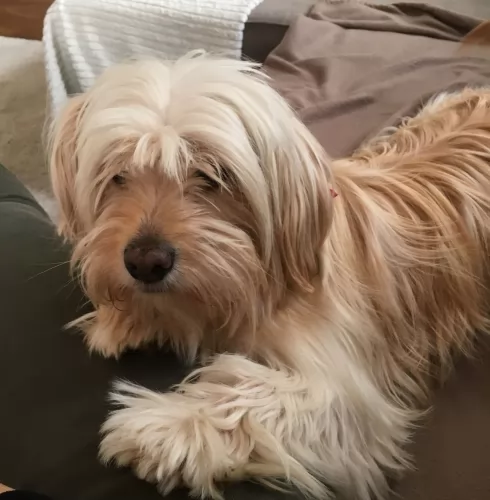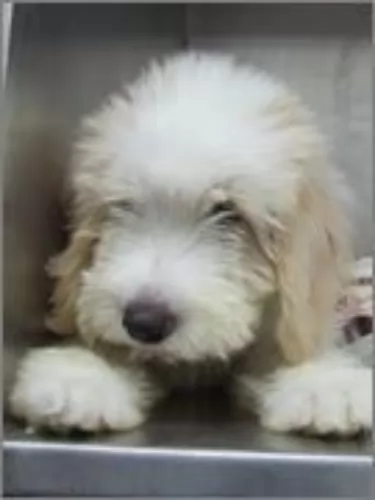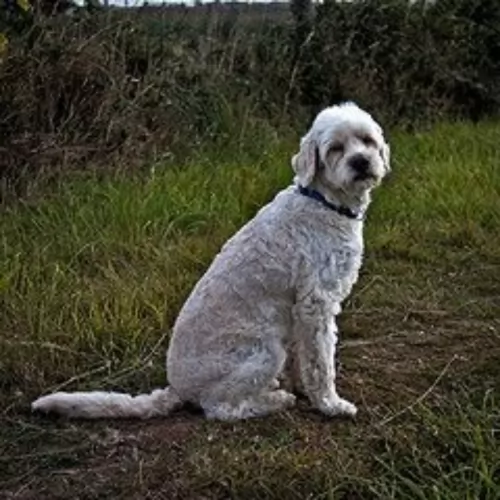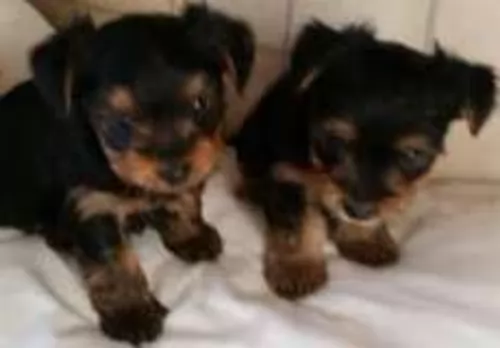 MyDogBreeds
MyDogBreedsCyprus Poodle is originated from Cyprus but Bull and Terrier is originated from United Kingdom. Cyprus Poodle may grow 20 cm / 7 inches shorter than Bull and Terrier. Cyprus Poodle may weigh 16 kg / 35 pounds lesser than Bull and Terrier. Both Cyprus Poodle and Bull and Terrier has almost same life span. Cyprus Poodle may have less litter size than Bull and Terrier. Cyprus Poodle requires Moderate maintenance. But Bull and Terrier requires Low maintenance
 Unfortunately the Island of Cyprus may well be beautiful and have a wonderful climate, but when you take a deeper look, the island has a serious problem with feral cats and stray dogs.
Unfortunately the Island of Cyprus may well be beautiful and have a wonderful climate, but when you take a deeper look, the island has a serious problem with feral cats and stray dogs.
The many sanctuaries battle to keep up with the volume of neglected and abandoned animals on the island. One of the dogs found on the Island of Cyprus is the Cyprus Poodle. Some people say that the Cyprus Poodle is a cross between a poodle and a terrier.
Today this small dog is sought after in other countries for his loving personality and attractive looks.
The Bull and Terrier is a blend between a number of Old English Terriers and the Old English Bulldog. It is believed that this extinct dog was the start of breeds such as the American Pit Bull Terrier and the Staffordshire Bull Terrier.
They were excellent for hunting rats and weren’t a true breed. The dog was popular in the British Isles and in the United States in the 19th Century. They became rare as different varieties of Bull and Terrier were bred and standardized.
Most terriers have a good deal of Old English Bulldog blood in them so as to provide them with the courage to fight and hunt prey, while the English Terrier blood provided a feisty temperament and longer legs for speed.
Around 1860, the Bull and Terrier breed split into 2 categories – the pure white Bull Terrier and the ones of color. The Bull and Terrier was never recognized as a standardized breed by any of the kennel clubs.
 The Cyprus Poodle is such an attractive little dog with his jaunty personality and his dense, curly hair.
The Cyprus Poodle is such an attractive little dog with his jaunty personality and his dense, curly hair.
He stands in the region of 20 to 30cm and can weigh roughly 3 to 6kg. His hair is essentially cream or white with orangey tips and some people claim he is a cross between a poodle and a terrier.
He is a small dog. His curly coat is woolly and can be in a number of different colors such as white, ivory or apricot or even other colors.
The curly haired Cyprus Poodle isn’t a huge shedder but regular clipping keeps him looking nice and makes sure the coat doesn’t matt.
He has floppy ears, a long tail and brown eyes. He loves to go for a swim and then to dart around the place so he may require a bath every now and again to keep his beautiful coat clean and free of matting.
The Cyprus Poodle is an even tempered dog and he makes the perfect family pet, forming close bonds with his human family members.
He is playful, social and friendly and gets on well with children in the home as well as any other pets. He may be a small, friendly dog, but he will need training and socialization if you want him to be obedient and relaxed around other people.
There isn’t too much detail and information on the Bull and Terrier but we can be sure that with the cross between the Old English Bulldog and the Old English Terrier, he would have been a small to medium sized compact, muscular dog, standing roughly between 38cm to 50cm in height and weighing anything in the region of 11 to 22kg.
He would have had a big head, and most of the dogs had a medium to long tail. His coat was of many colors such as white, fawn, tan or brindle and would have been short and smooth.
As far as temperament goes, the Bull and Terrier would certainly be courageous, feisty, independent, strong and energetic. Socialization wasn’t available in those days but with training, this intelligent breed would be affectionate with his human family.
 Your Cyprus Poodle is just dying to be a member of a human family because he has a lot of love and friendliness to give.
Your Cyprus Poodle is just dying to be a member of a human family because he has a lot of love and friendliness to give.
He wants lots of love and attention in return though. He doesn’t like to be put out in the garden and forgotten about. Make sure that he is a fully involved family member.
He is such a friendly, loving, social little dog and in exchange for your love and care, he is guaranteed to make you a most wonderful and loyal friend.
Nobody seems to be 100% sure when the classic Bull and Terrier dog became extinct but it is strongly assumed that it was some time between 1890 and 1920.
People believe that there are actually surviving breeds that could be considered Bull and Terriers. One thing is sure, when you consider that the Bull and Terrier is actually made up of several breeds such as the Bull Terrier, the Staffordshire Bull Terrier, Boston Terrier and American Pit Bull Terrier then you can imagine the character of the dog – brave, hardy, intelligent, feisty, bold, confident and fearless. He was a dog who loved his human family and would have been both friend and protector.
These dogs have been popular around the world, and have had a strong influence in the development of a number of other breeds. Even today, breeders are always looking at ways to develop new breeds based on the descendants of the Bull and Terrier.
 Because the Cyprus Poodle is a cross-breed, he is a robust, long-life dog and not likely to get ill very easily.
Because the Cyprus Poodle is a cross-breed, he is a robust, long-life dog and not likely to get ill very easily.
Your Cyprus Poodle can have between 1 to 6 puppies but there are tremendous health benefits waiting for your pet when you ensure that he is rather neutered or spayed in the case of a female. Make sure too that he has all his vaccinations up to date. Make sure he has an excellent diet, a warm, dry place to sleep, he is exercised and that he gets regular check-ups from the vet.
There are some common dog illnesses that you want to look out for. When he is a puppy make sure that he gets the necessary vaccination against life threatening illnesses such as parvovirus, distemper and rabies.
There are some diseases that do affect poodles a little more than with other breeds, and one of these is Cushing’s Disease.
This is an illness that comes about when the body of your dogs makes too much cortisol. It is difficult for you to see symptoms of this disease in your pet, but if he is displaying unusual behavior, then you want to get him to the vet who can decide on treatment for him.
The Bull and Terrier was no doubt a robust breed with few health issues. However his owners of that time would have had to be aware of eye diseases such as cataracts that could have lead to blindness.
Other health issues they would have had to contend with would have been hip and elbow dysplasia, a disease which can cause lameness in a dog accompanied with pain. Because the Bull and terrier was mixed with the English Bulldog, the dog owners would have had to be aware of respiratory health problems, as the Bull dog is a breed that is susceptible to these problems.
 A cyprus poodle makes such a good pet and you will want to ensure that you feed your one an excellent diet so that he remains healthy and content.
A cyprus poodle makes such a good pet and you will want to ensure that you feed your one an excellent diet so that he remains healthy and content.
Some people are overwhelmed at the sheer variety of commercially manufactured dog foods today, but the choice can be made a lot simpler by sticking to the better quality ones where protein is at the top of the ingredients list.
Home made food such as cooked brown rice, vegetables and cooked chicken will be excellent for your Cyprus Poodle as well as including some raw meat in the diet. Make sure he always has access to cool, clean water as this water is essential to his health, making it possible for all his bodily functions.
Brush his hair regularly and brush his teeth 2 or 3 times a week. Make sure to use toothpaste and toothbrush specially designed for dogs.
Your poodle will happily slot into life with you in the city or the country, but even if you have a garden, you can’t expect your dog to always find his own entertainment. Take your poodle for walks and play games with him so that he remains healthy and content.
Long ago the Bull and Terrier was developed to be a hunting dog, and because he was a blend of the English Bulldog and Terriers such as the Staffordshire Bull Terrier and English Terrier, he no doubt had a short coat that would have required being brushed down from time to time.
The Bull and Terrier dog was bred for hunting, and he would have in all likelihood have caught some of his own food. He would therefore have got a lot of protein in. His owners would also have fed him some of their own food too which would have been eggs, home-made bread, rice, fresh vegetables and meat.
He would have had a good quota of raw meat in his diet too and this would have ensured that his coat was shiny and glossy, free of rashes. Dogs such as the Bull and Terrier wouldn’t have eaten commercially produced kibble as that was only introduced in the 1930s.